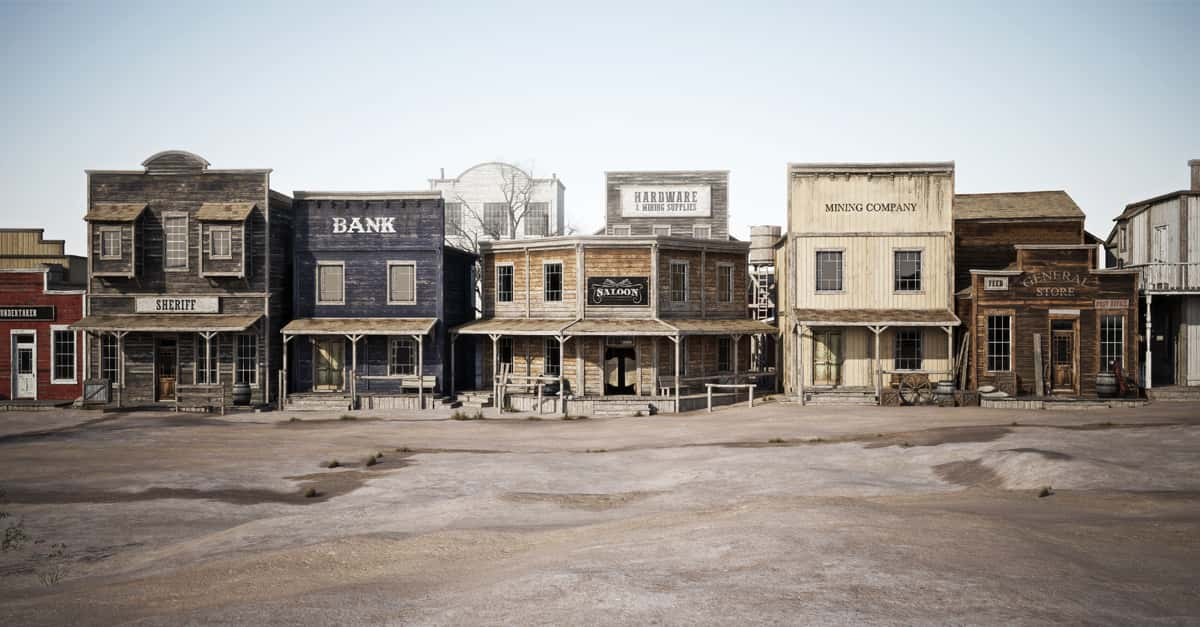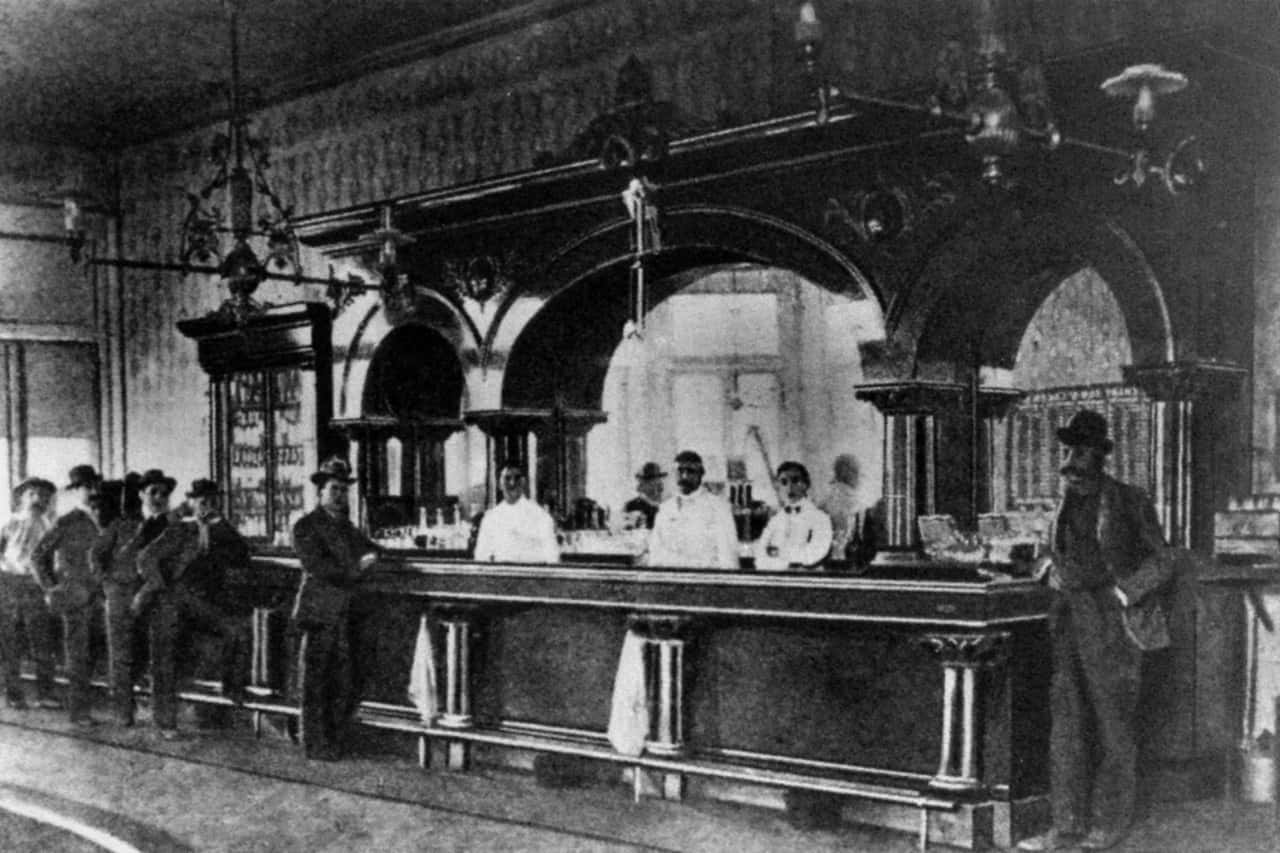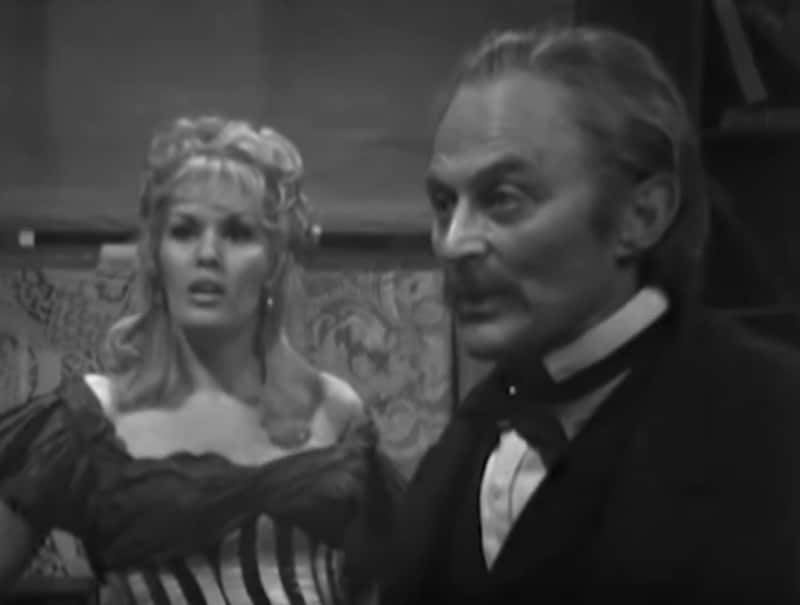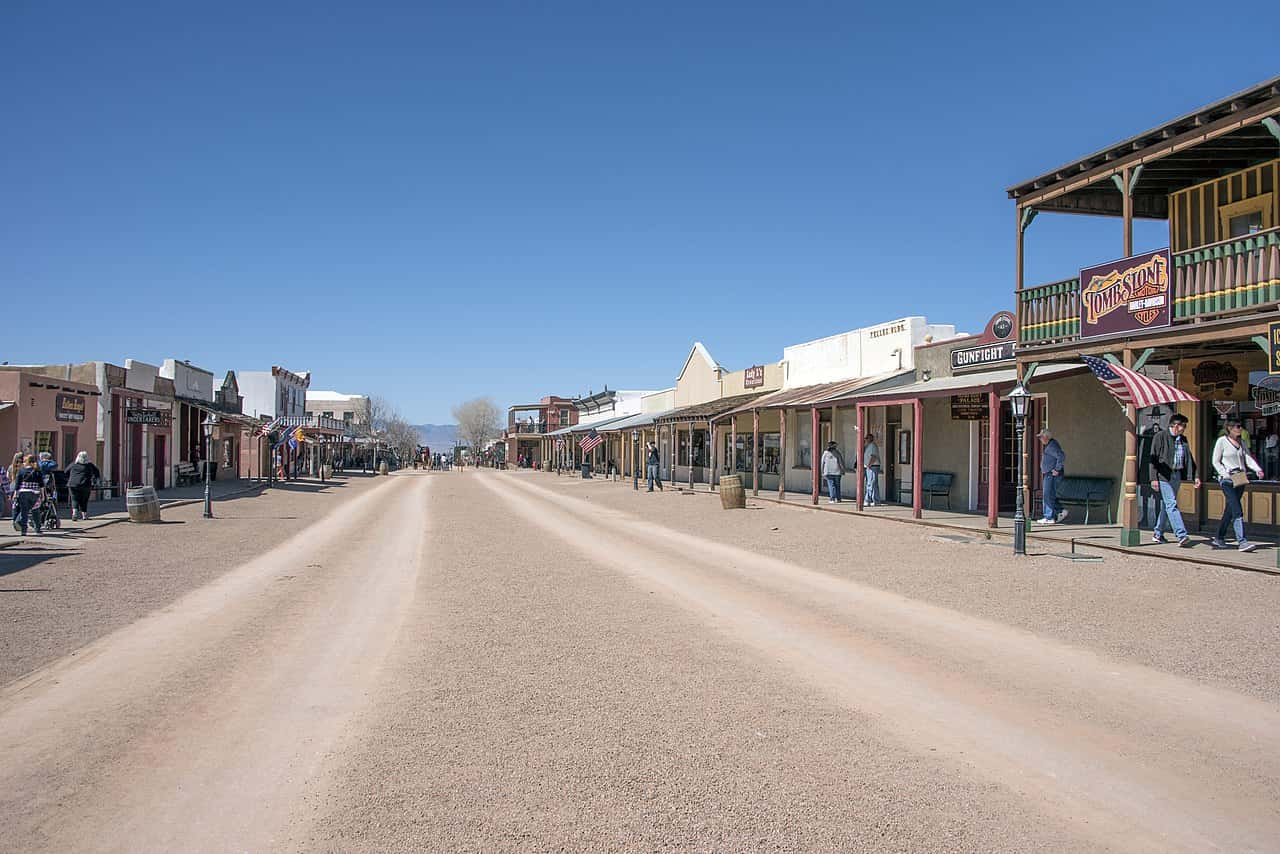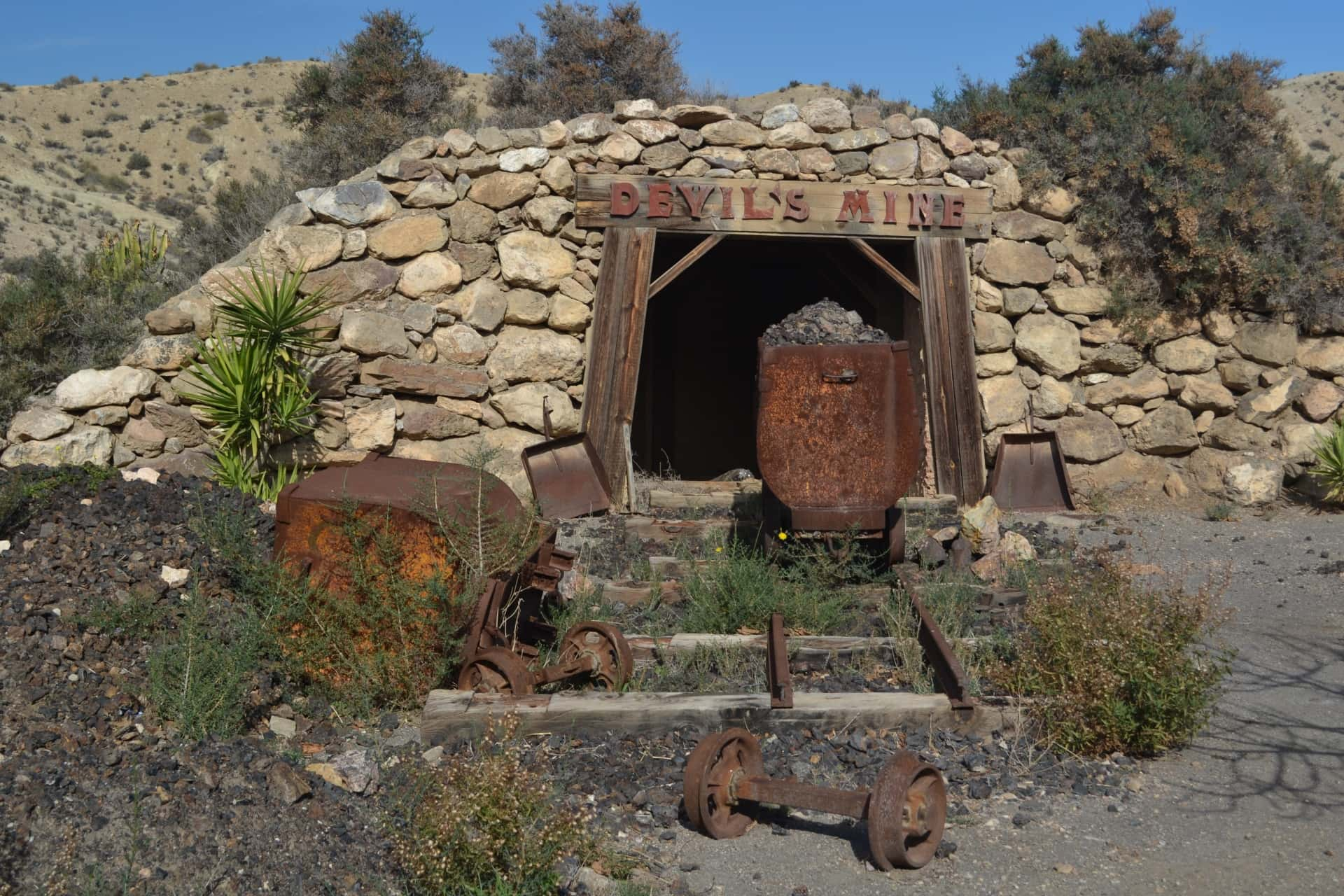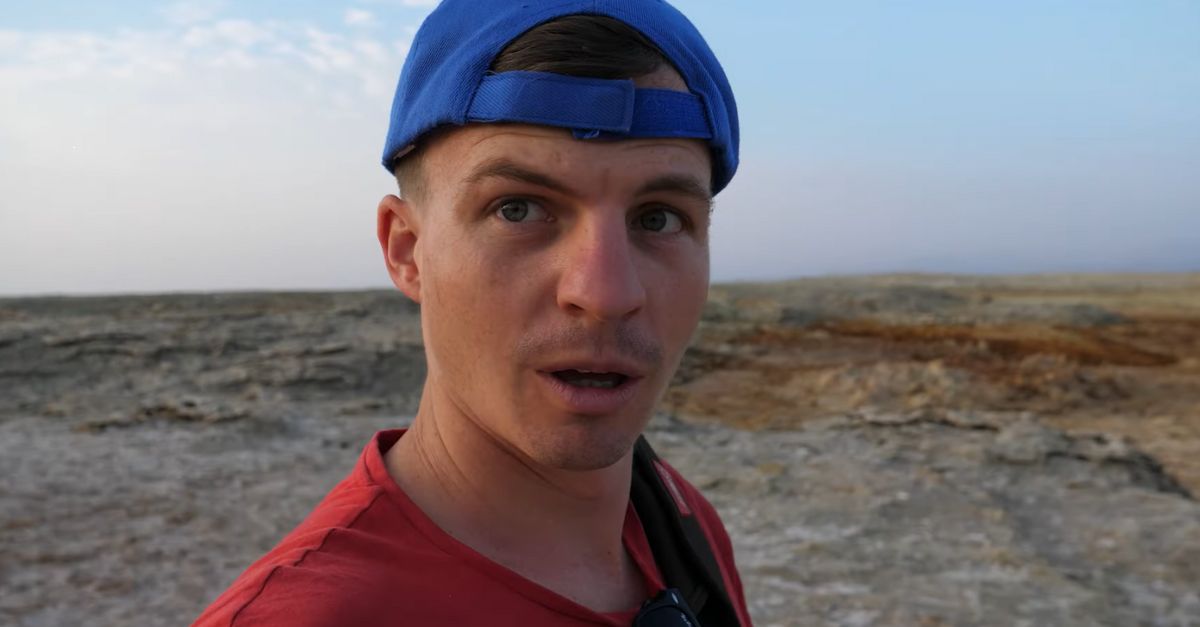It’s one of the most infamous towns in American history. From vicious feuds to brutal gunfights, Tombstone was not a place for the faint of heart. In many ways, it was the epicenter of the Old West. But what do you really know about Wyatt Earp's legendary haunt? How did it start, and how did it end? Saddle up, because we're about to take you through the wild history of Tombstone, Arizona.
1. The Silver Rush
The founder of Tombstone was a US Army Scout named Ed Schieffelin. A known wanderer and adventurer, Schieffelin set out to explore the land that eventually became Cochise County. In 1877, Schieffelin discovered veins of silver ore on a plateau later called Goose Flats. He staked his claim on the area, even as a settlement formed almost overnight.

2. It was a Very Good Year!
In February 1881, miners founded Cochise County. That same month, Tombstone acquired its first telegraph service (ask your great-great-grandparents about that). This addition of communication came in handy when Tombstone became the seat of Cochise County that same year.
3. Bring in the Capitalists!
The presence of silver caused a boomtown to build up around the new mine. Since Ed Schieffelin was the one to discover the silver, he was first in line to profit from it. He formed the Tombstone Mining and Milling Company with his brother, Al, and their business partner, Richard Gird. Tombstone was off to the races!
4. From the Ground Up
As you can imagine, Tombstone grew rapidly thanks to settlers drawn to the appeal of silver. By 1879, less than two years after the silver had first been discovered, Tombstone was home to several thousand people living in roughshod homes made of matchstick and canvas.
5. Early Bird
Tombstone’s founding date of 1879 actually predated the formation of Arizona as a state by nearly 35 years! Arizona was the last continental state to join the US, joining the Union in 1912.
6. The Rise of Lawlessness
Tombstone’s close proximity to the Mexican border resulted in some settlers taking to a life of lawlessness. Smugglers on both sides of the border made off with cattle and booze from Mexico (whose government heavily taxed those things) and made a bundle selling them in American territory.
7. Rolling in Cash
Over the course of Tombstone’s history, its mines produced around $85 million worth of silver! For the 19th-century, that was a pretty penny for ol' Schieffelin!
8. Yee-Haw!
Tombstone saw many different illicit organizations, but the Cochise County Cowboys were the most infamous. Originally working as ranchers or cowhands, this group of relatives and acquaintances quickly turned to a life of lawlessness. They were so infamous that they're one of the main reasons we use the term "cowboy" today. However, back then, calling an honest rancher a "cowboy" was an insult!
9. Killer Graves
Tombstone’s cemetery was famously known as Boot Hill. In the Old West, it was custom to nickname a cemetery “Boot Hill” if gunslingers who “died with their boots on” were buried there. Tombstone’s Boot Hill famously contained the remains of the three men who walked into the O.K. Corral—and never walked out.
10. The Godfather of the Old West
Often called “Old Man” Clanton, Newman Haynes Clanton was a former Confederate Home Guardsman who became a rancher in Arizona territory after the American Civil War. A known thief and murderer, Clanton was the patriarch of the Cochise County Cowboys. He hired many known outlaws to work on his ranch, and his sons eventually became prominent members of the gang.
 My Darling Clementine (1946), Twentieth Century Fox
My Darling Clementine (1946), Twentieth Century Fox
11. The Apple Didn’t Fall Far
Two of Old Man Clanton's four sons, Ike and Billy, were actively involved in theft, smuggling, and murder. Both brothers were later involved in the Gunfight at the O.K. Corral.
12. Overshadowed
People often consider Wyatt Earp the central figure in the feud between the Earps and the Cowboys in Tombstone. However, his brother Virgil was actually the first of the Earp family to travel to Tombstone, when he became the town's deputy marshal in 1879. Compared to his more famous brother, Virgil was the more experienced lawman at the time. He was later the one leading his brothers and Doc Holliday down to the corral.
13. Wonderful Sense of Humor
Before Ed Schieffelin ever set out to explore Cochise County for valuables, he was warned to abandon his plans. Given the ongoing conflict between the local Native American tribes and the American government, the region was considered hostile territory. Schieffelin’s friend, Al Sieber, allegedly warned him, “The only rock you will find out there will be your own tombstone.”
In honor of that positive attitude, Schieffelin named his new mining claim “Tombstone." When his claim became a full-fledged town, the name stuck.
14. What's in a Name
It seems like Ed Schieffelin couldn't resist a good joke. After he and his partners founded a company to lay claim to Tombstone, their first lode of silver dried up way faster than expected. His brother Al feared the worst—he was ready to give up and go home. But Schieffelin wasn't about to go down without a fight, and after weeks of frantic searching, he found more silver on the land.
After his resentful brother called him a “lucky cuss,” Schieffelin gleefully used that as the name for his new claim!
15. Money Talks
Despite their dark reputation as outlaws, the Cowboys' members weren’t banned from Tombstone. On the contrary, they were such free spenders in town that the businesses of Tombstone were only too happy to host them!
 Tombstone (1993), Hollywood Pictures
Tombstone (1993), Hollywood Pictures
16. Friends in High Places
One person in Tombstone who was sympathetic to the Cochise County Cowboys was Johnny Behan. As the Cochise County Sheriff, Behan drew a lot of support from the territory around Tombstone, which was populated by the ranchers—many of whom were Cowboys themselves.
17. Hit the Road, Jack!
Johnny Behan and Wyatt Earp did NOT get along—and one big reason was a woman by the name of Josephine Marcus. Since Marcus was an infamously unreliable source, it isn’t fully clear what happened, but we know that Behan proposed to her at some point in 1879. About a year later, she moved with him to Tombstone. Then, in 1881, she found him in bed with another woman and kicked him out.
Marcus famously started going steady with Earp soon after that. As you can imagine, Behan wasn't exactly pleased with the development.
 Tombstone (1993), Hollywood Pictures
Tombstone (1993), Hollywood Pictures
18. It was Just a Personal Preference!
The Cochise County Cowboys were a bad crew—but Johnny Ringo was one of the worst. The famously quick-tempered Ringo first showed up in Tombstone in 1879, and it didn’t take him long to get in trouble with the law. In December of that same year, Ringo was in a saloon when he offered a drink of whiskey to Louis Hancock.
When Hancock refused, saying he preferred beer, a drunken Ringo drew his weapon on the unarmed Hancock and shot him!
 Tombstone (1993), Hollywood Pictures
Tombstone (1993), Hollywood Pictures
19. Old Wounds Still Bleed
Although it had been more than 15 years since the Civil War ended, the conflict still divided people in 1880s Tombstone. Wyatt Earp and his brothers, along with most of the town’s residents, were from northern states. On the other hand, the ranchers in the outlying countryside, particularly the Cowboys, were mostly Confederate sympathizers.
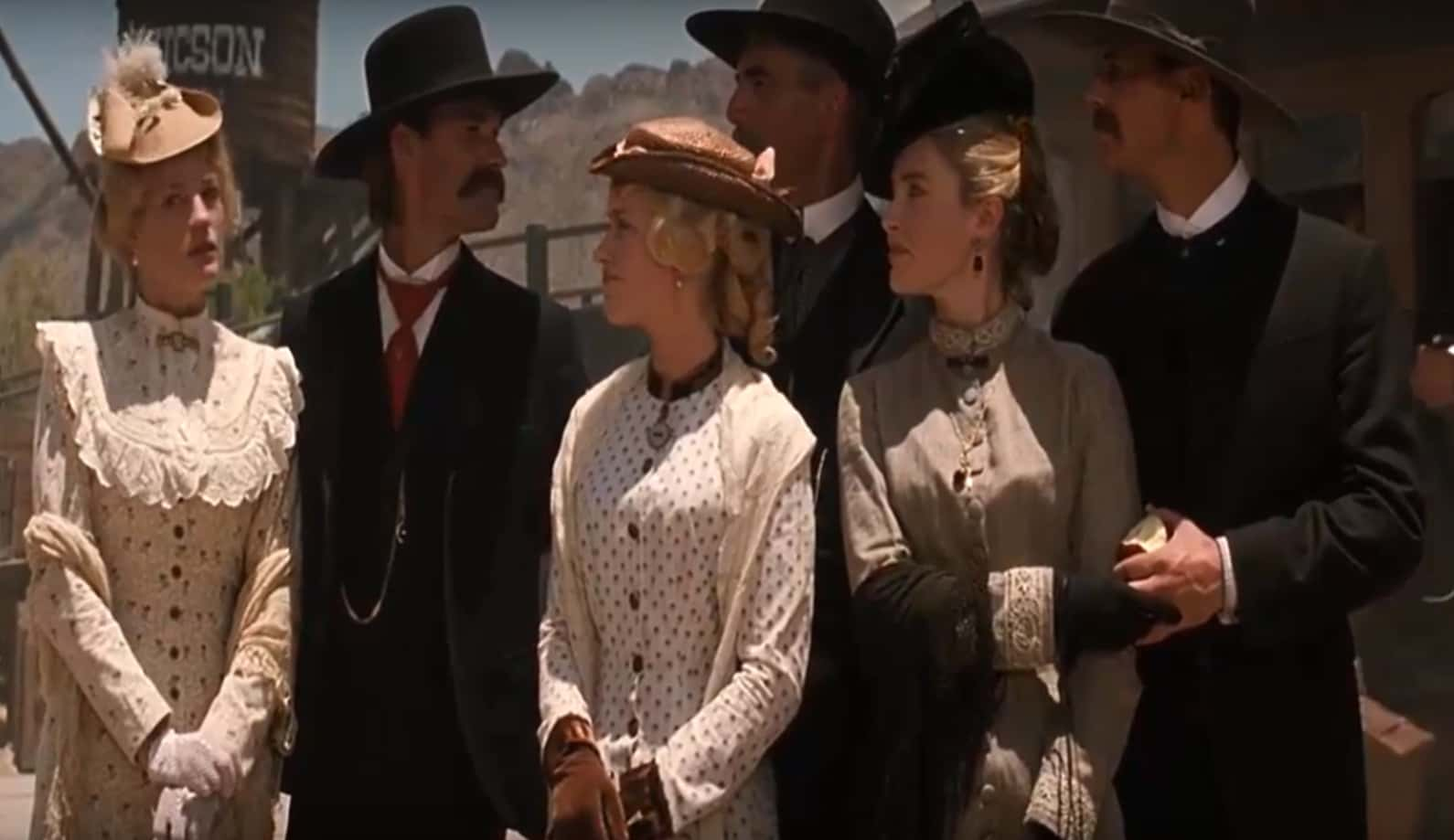 Tombstone (1993), Hollywood Pictures
Tombstone (1993), Hollywood Pictures
20. Forgotten Siblings
Wyatt, Virgil, and Morgan might be the most famous, but they weren't the only Earps in Tombstone. Two other brothers, Warren and James, moved out to live alongside their more famous kin. While neither one was present for the O.K. Corral, both later rode on the infamous Earp Vendetta Ride.
 Tombstone (1993), Hollywood Pictures
Tombstone (1993), Hollywood Pictures
21. Schieffelin v. Friday, Williams
Even as the mines around Tombstone were being developed, Ed Schieffelin and his new business partners became embroiled in a court battle. Two men named Ed Williams and Jack Friday discovered a fresh lode of silver when they were chasing after a stray mule. When they made their own claim, Schieffelin and his associates argued that the new claim overlapped with their own original one.
A judge eventually upheld Friday and Williams’ claim, and Schieffelin wasn't happy about it. He named the remainder of his claim “Contention.” Yeah, he wasn’t bitter at all!
22. Anyone for a Dip?
Believe it or not, Tombstone was—and still is—home to one of the very first public swimming pools in Arizona. Their pool actually dates back to 1881! After all, there's nothing like a nice cool dip after a day of gambling and gunfights.
23. That’s Entertainment!
Tombstone had a surprisingly vibrant nightlife for a boomtown in the middle of nowhere. All the miners needed some form of entertainment during their downtime, and businesspeople were only too happy to provide it for them. Tombstone was home to several theaters and 24-hour saloons serving dozens of malts and imported wines. Lots of restaurants even served seafood brought from the west coast in refrigerated train cars.
24. What if We Want Some Pho?
Speaking of those restaurants, Tombstone’s food industry was far more sophisticated than you'd think. By 1881, the same year that Wyatt Earp marched down to the O.K. Corral, Tombstone boasted establishments that sold Chinese, French, Italian, and Mexican food.
25. Fantastic!
In 1966, the classic British sci-fi series Doctor Who set a whole serial in the town of Tombstone. The Gunfighters consisted of four episodes where the Doctor (played by William Hartnell at the time) interacted with the various figures of Tombstone such as Doc Holliday, the Clantons, and the Earps.
26. Strike!
By 1880, Tombstone numbered 10,000 people and already enjoyed the benefits of much larger American cities. It even had its own bowling alley! Admittedly, we can’t really imagine Wyatt Earp or Doc Holliday playing a round of ten-pin, so maybe that’s why they never include that tidbit in the movies.
27. Bawdy Fun
In December 1881, Lottie and William Hutchinson opened The Bird Cage Theatre in Tombstone. This big Victorian structure was originally meant to provide respectable family shows, but the clientele of the miners resulted in the theatre catering to much baser pleasures instead. Among the attractions to be seen at the Bird Cage were comedians, cross-dressing entertainers, and a strongwoman by the name of Mademoiselle De Granville who famously lifted heavy objects with her teeth!
28. No Bathroom Breaks?
The Bird Cage Theatre saw the longest poker game in American history. The rules included that anyone wishing to join in needed to pay $1,000 upfront. The gamblers who signed up played continuously for 24 hours a day, seven days a week. Among the many people who joined in at different intervals were Wyatt Earp, Doc Holliday, Diamond Jim Brady, and George Hearst (the father of William Randolph Hearst).
The poker game lasted eight whole years, from 1881 to 1889. By the time it was done, upwards of $10 million had crossed the table!
29. Single or Double Scoop?
Seafood, bowling, a swimming pool, what else could possibly have been brought out into the desert? Well, how about ice cream! As you can imagine, the baking Arizona sun made Tombstone's ice cream parlor extremely popular. In fact, Wyatt Earp had something of a sweet tooth, and he was one of the establishment's best customers.
30. Adapted for the Screen
Unsurprisingly, Tombstone has long been embedded in American pop culture. Many films have been set in this Wild West institution, particularly to relive the events surrounding the Cowboy-Earp feud. These films include Gunfight at the O.K. Corral, Wyatt Earp, Hour of the Gun, and of course, Tombstone.
 Tombstone (1993), Hollywood Pictures
Tombstone (1993), Hollywood Pictures
31. Blue Murder
In March 1881, a stagecoach left Tombstone carrying silver bullion worth around $26,000 (nowadays, it’d be worth around $700,000). It never made it to its destination. Three Cowboys took over the coach en route. Eli “Budd” Philpot, the driver, and a passenger named Peter Roerig were both fatally shot. When Deputy US Marshal Virgil Earp found out about the theft, he and his brothers sought those responsible, putting the Earps on a collision course with the Cowboys.
 Tombstone (1993), Hollywood Pictures
Tombstone (1993), Hollywood Pictures
32. Washed Away
The silver mining boom that helped found Tombstone was over far more quickly than anyone could have predicted. As early as 1880, water began leaking into the mines. Although work was able to continue for a time, the silver ore deposits were flooded by 1882.
33. Fire and Water
Despite the flooding of the mines, the mining companies and the residents of Tombstone weren’t ready to give up. Cornish engines were brought in to pump the water out of the mines and make them workable again. By 1884, a total of 576,000 gallons of water were being pumped out of the mines every 24 hours! This continued until the pumping plant burned down in 1886.
The damage was irreparable, and the declining cost of silver meant that the mining never reached its heyday levels again.
34. O.K. Corral, Part I
The feud between the Earps and the Cochise County Cowboys came to a head on October 26, 1881. The night before, Doc Holliday (a friend to the Earps) and Ike Clanton had had a run-in, which Wyatt broke up by taking Holliday back to his room. Virgil Earp played poker with Clanton, Johnny Behan, and a Cowboy named Tom McLaury until dawn, then he also went to get some rest.
Clanton wasn't done yet though—he continued drinking into the morning, making loud threats against Holliday and the Earps.
 Tombstone (1993), Hollywood Pictures
Tombstone (1993), Hollywood Pictures
35. O.K. Corral, Part II
At 1 PM, Virgil and Morgan Earp heard about Ike Clanton’s threats and apprehended him with a swift pistol whip to his head. While Clanton was taken to court that same afternoon, his friend Tom McLaury confronted Wyatt Earp while allegedly carrying his own weapon. Just like his brothers, Wyatt resorted to a pistol-whipping McLaury into submission.
 Tombstone (1993), Hollywood Pictures
Tombstone (1993), Hollywood Pictures
36. O.K. Corral, Part III
After these violent altercations, Ike Clanton and Tom McLaury met up with Frank McLaury, Billy Clanton, Wes Fuller, and Billy Claiborne. The men were armed, and allegedly making threats against the Earps. Sheriff Johnny Behan offered to disarm them, but the Cowboys refused to disarm unless the Earps did the same. Fed up, Virgil led Morgan Earp, Wyatt Earp, and Doc Holliday to the O.K. Corral to disarm the Cowboys themselves.
 Tombstone (1993), Hollywood Pictures
Tombstone (1993), Hollywood Pictures
37. O.K. Corral, Part IV
As could be expected, both sides gave different accounts of what exactly went down at the O.K. Corral. We don't know which side opened fire first, but we do know the end result. Ike Clanton, Billy Claiborne, and Wes Fuller all fled the fight, while Billy Clanton and the McLaury brothers were fatally shot. Billy was just 19 years old. Meanwhile, Wyatt Earp walked away unscathed, and the rest of his posse suffered minor injuries.
People have debated whether it was murder or lawful defense of their lives ever since. We'll probably never know, but one thing is for sure: the Gunfight at the O.K. Corral put Tombstone on the map forever.
38. The Fall of the Clantons
In case you’re wondering what happened to Old Man Clanton and his remaining sons, we’re happy to tell you. Two months before the O.K. Corral, Federales ambushed Old Man Clanton while he was herding stolen cattle in Mexico. Clanton was fatally shot while cooking breakfast, collapsing into his own cookfire.
Ike was the lucky one of the bunch, as he managed to survive both the O.K. Corral and the Earp Vendetta Ride, but the reaper finally caught up to him in 1887. While stealing cattle, a constable confronted him and he was shot while trying to resist arrest.
39. Who Shot Johnny Ringo?
Johnny Ringo was among the Cowboys who joined Sheriff Johnny Behan’s posse to apprehend the Earps and their allies after the O.K. Corral. However, contrary to what the movies often show, Ringo wasn't leading the posse, nor did he die in a shootout. In fact, his demise remains a mystery to this day. On July 14, 1882, Ringo’s lifeless body was found against a tree trunk in Arizona territory with a bullet hole in his temple.
The authorities ruled that he took his own life and he was buried not far from where he was found.
 Tombstone (1993), Hollywood Pictures
Tombstone (1993), Hollywood Pictures
40. Did Anyone Question the Butler?
Although many historians accept that Ringo's end was self-inflicted, people have long believed that he wasn't the one holding the weapon that ended him. Rather, the most likely culprits are, you guessed it, the Earps. After Morgan Earp was slain by a group of Cowboys, the Earps believed Ringo was involved. Oh, and there's the little fact that Wyatt Earp bragged that he killed Ringo himself.
However, Earp's account didn’t exactly line up how Ringo was found, and he was definitely one to stretch the truth. Holliday, meanwhile, might have been responsible, but he was in all the way over in Colorado just six days before Ringo was found. Combine that with the fact that he was wanted for murder in Arizona, it seems a little unlikely he'd make the trek back just to kill Ringo and leave him slumped against a tree.
 Tombstone (1993), Hollywood Pictures
Tombstone (1993), Hollywood Pictures
41. Farewell, Founder
Despite becoming rich from discovering the silver mines which helped establish Tombstone, Ed Schieffelin grew restless. He was born to roam, not to run a mine. He left Tombstone in the early 1880s to embark on several grand journeys to find gold in Alaska. After that, Schieffelin tried to settle down with a wife in San Francisco—but he just couldn't stay in one place that long.
He eventually went off to prospect for riches in Oregon, where he passed from a heart attack in 1897.
42. The Roof! The Roof! You Know the Rest!
On June 22, 1881, a lit cigar fell into a barrel of booze in Tombstone’s Arcade Saloon, erupting into a massive blaze. Unfortunately, Tombstone had little protection against fires, and the inferno spread quickly. By the time the fire was under control, 66 establishments in Tombstone’s business district lay in ashes.
43. Didn’t We Learn Our Lesson the First Time?
Less than a year after the first major fire in Tombstone, the city was hit by another—and this one was much worse. This second fire began in a Chinese laundry and destroyed the majority of the business district. There was so little water on hand to fight the flames that people resorted to dynamiting buildings to try and stop the fire in its tracks. Despite these desperate measures, over 100 establishments burned down the second time around.
44. From Silver Mines to Silver Screens
With the decline of the silver mines, not to mention the terrible fires, Tombstone quickly dwindled. By 1890, the number of residents in Tombstone was down to 1,900 from a high of around 14,000. Ten years later, that number was as low as 700. The only thing that saved Tombstone from becoming completely extinct was the legend of the Old West, kept alive through the movies.
Tourism quickly became Tombstone’s saving grace—though it hasn't proved as lucrative as silver was.
45. Come One, Come All!
Tombstone continues to be a high draw for tourism to this day. The Gunfight at the O.K. Corral is often re-enacted by actors, and portions of the Old West town have been rebuilt as tourist attractions. In 2005, CNN reported that Tombstone receives around 450,000 tourists per year.
46. Seems Pretty Tame
A couple months after the Gunfight at the O.K. Corral, Virgil Earp was jumped on the streets of Tombstone. He survived, but he was brutally injured. Then, a few months after that, Morgan Earp was fatally shot while playing pool. Then, to make things even worse, the Cowboys went after the Earps while they were taking Morgan's body to California by train. Blinded by rage and seeking vengeance, Wyatt Earp and his posse embarked on a month-long campaign to hunt down the men responsible for the attacks: The Earp Vendetta Ride.
By the time they were satisfied, four men, all Cowboys, lay dead.
 Tombstone (1993), Hollywood Pictures
Tombstone (1993), Hollywood Pictures
47. Curly Bill
Maybe the most infamous of the Cochise County Cowboys was William “Curly Bill” Brocius. Just like Johnny Ringo, Brocius was known to have a very vicious streak when he took to drinking. His drunken antics included holding up a community dance and forcing people to dance with no clothes on, as well as firing live rounds at a preacher’s feet to make him dance while delivering a sermon.
 Tombstone (1993), Hollywood Pictures
Tombstone (1993), Hollywood Pictures
48. That Escalated Quickly…
On October 28, 1880, “Curly Bill” Brocius and a number of his associates were drunkenly firing shots in Tombstone when they were confronted by Fred White, the town marshal, and Wyatt Earp. White attempted to peacefully disarm Brocius, but when White grabbed the barrel of Brocius’ pistol, it discharged, catching the lawman in the groin. According to Earp, he immediately pistol-whipped Brocius and apprehended him.
 Tombstone (1993), Hollywood Pictures
Tombstone (1993), Hollywood Pictures
49. What a Twist!
When he stood trial for the firing on Tombstone marshal Fred White, Curly Bill expressed remorse that White (whom he’d personally liked) had been shot during that confrontation. He insisted that the incident, while terrible, had been a total accident. Bizarrely, White himself testified that Brocius hadn’t meant to shoot him! While this didn’t stop White dying from his wound, it did result in Brocius being exonerated in court.
 Tombstone (1993), Hollywood Pictures
Tombstone (1993), Hollywood Pictures
50. Did You See That?!
“Curly Bill” Brocius famously met his end at the wrong end Wyatt Earp's firearm. During the Earp Vendetta Ride, Earp and his allies ran into a group of Cowboys, including Brocius, at their camp by Iron Springs. As everyone sprang for their weapons and fired at each other, Earp dismounted and walked into the gunfire, shotgun at the ready. While Brocius frantically shot at him, Earp marched on and nearly cut Brocius in half with a load of buckshot.
Amazingly, despite being shot at by multiple men, Earp managed to walk away completely unscathed!
 Tombstone (1993), Hollywood Pictures
Tombstone (1993), Hollywood Pictures
Sources: 1, 2, 3, 4, 5, 6, 7, 8, 9, 10, 11, 12, 13, 14, 15, 16, 17, 18, 19, 20, 21, 22

